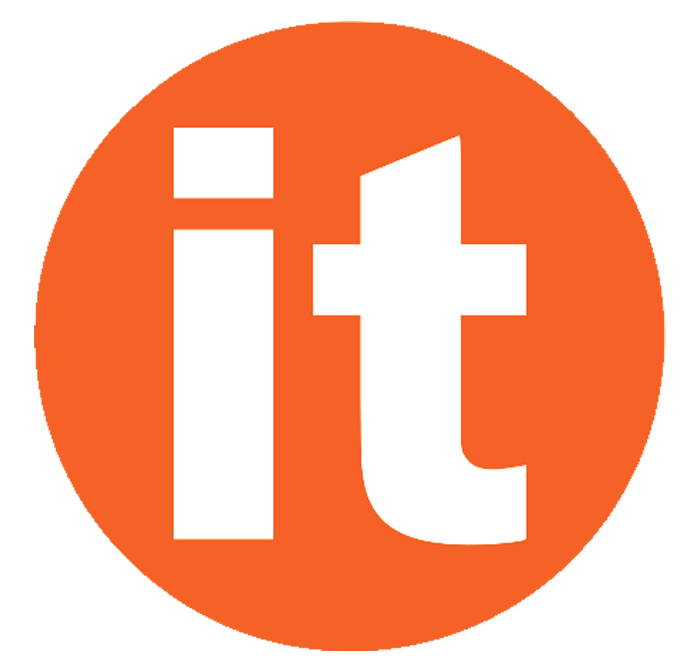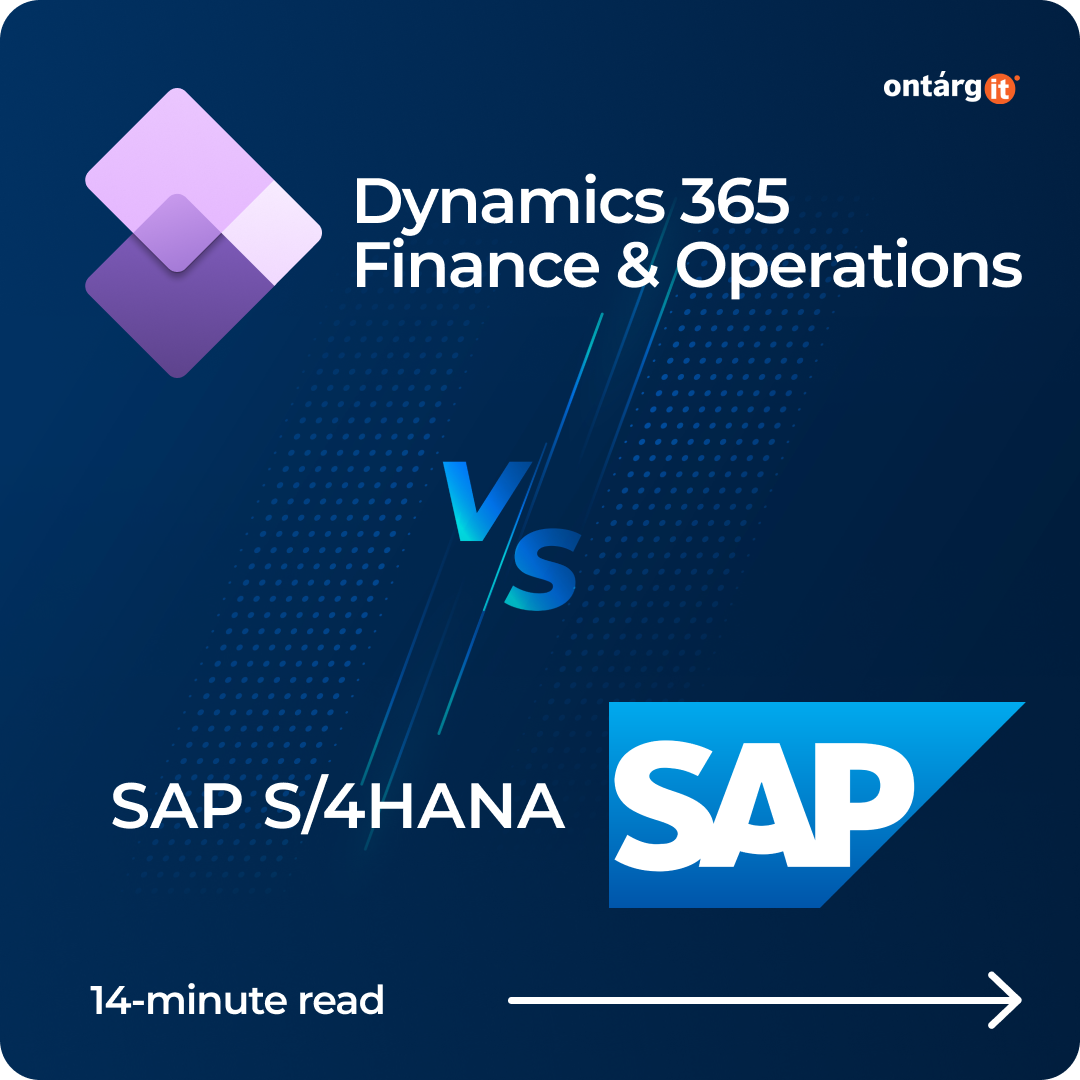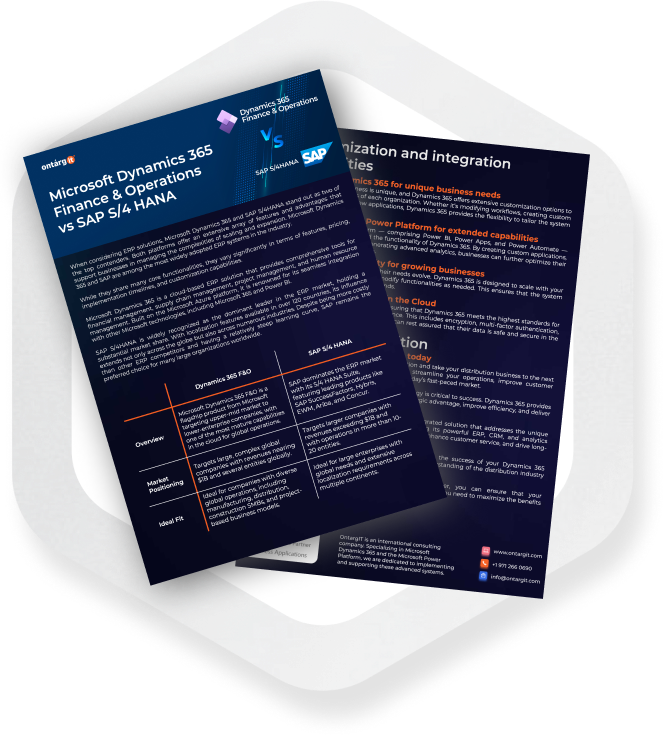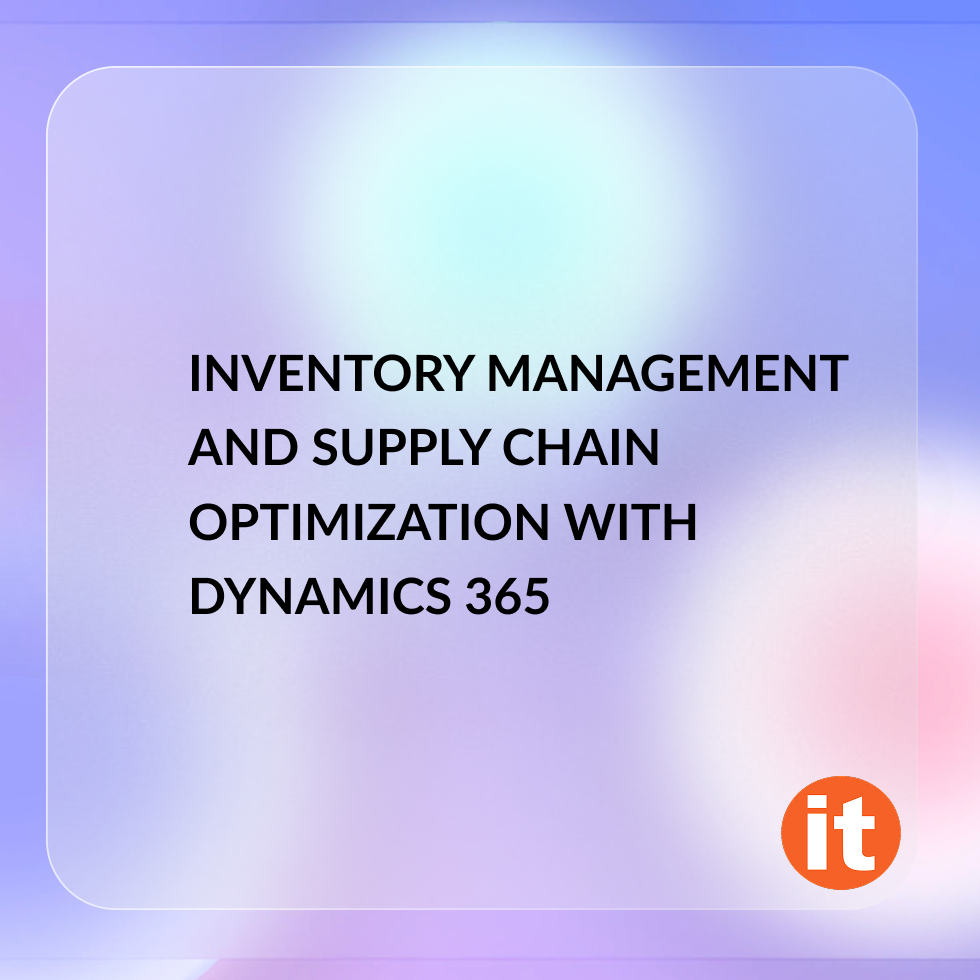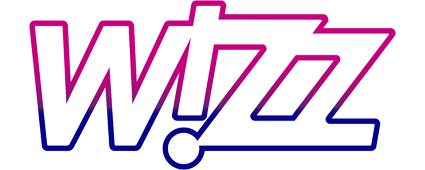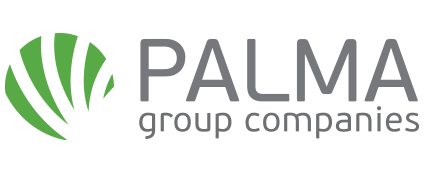The global enterprise resource planning (ERP) software market is expected to grow significantly, reaching around $101 billion by 2026. In this highly competitive environment, selecting the right ERP solution for your business is crucial. Two of the most prominent ERP systems in the market are Microsoft Dynamics 365 Finance & Operations (F&O) and SAP S/4HANA.
Both platforms offer extensive functionalities, but their differences may make one more suitable than the other depending on your specific business needs. This article provides a detailed comparison Dynamics 365 vs SAP to help you make an informed decision.
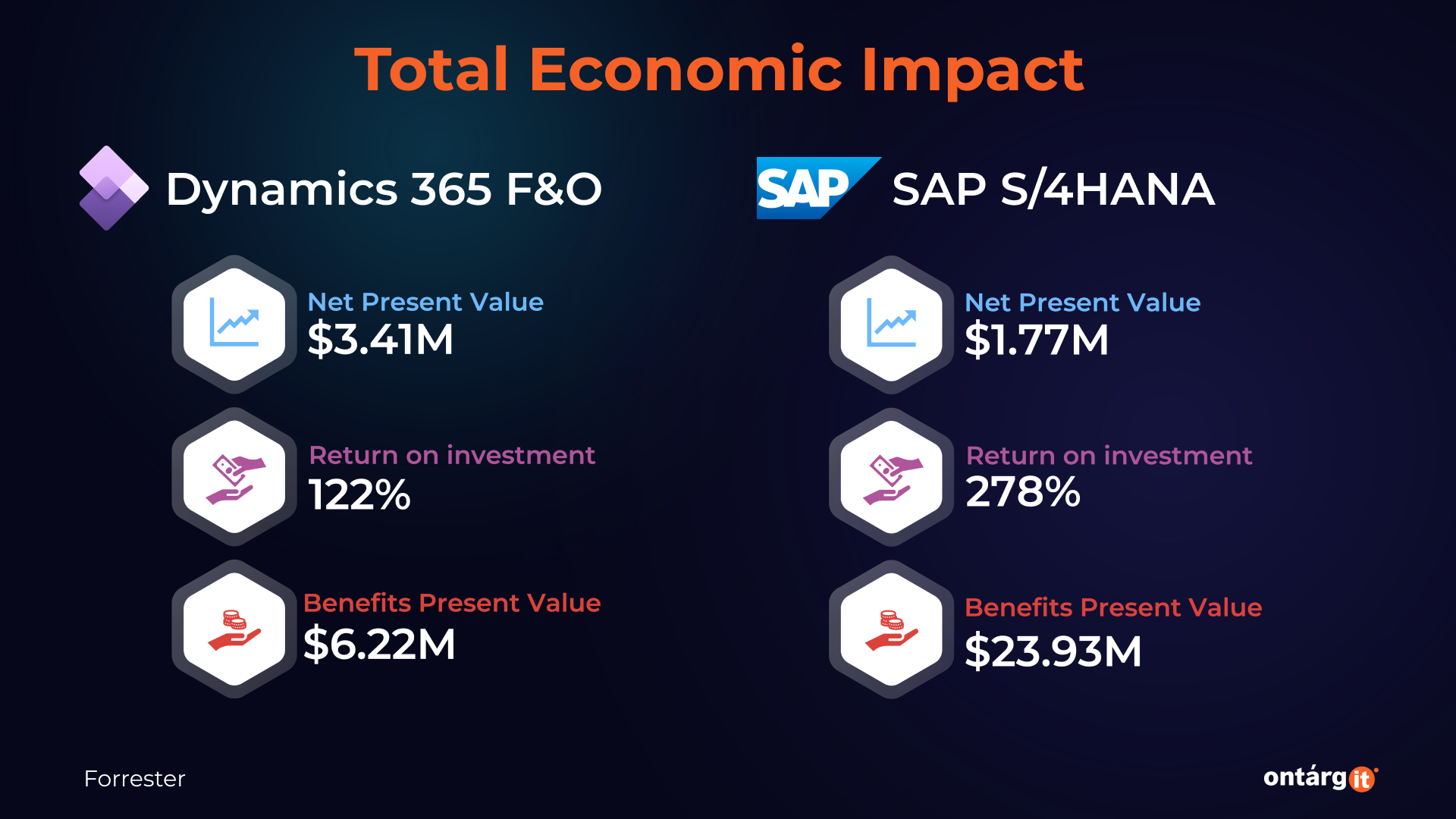
Dynamics 365 vs SAP short comparison
Microsoft Dynamics 365 F&O is renowned for its cloud-native architecture, seamless integration with the broader Microsoft ecosystem, and user-friendly interface. It has become a preferred choice for enterprises looking for an ERP system that offers a balance of affordability, functionality, and ease of use.
The platform’s ability to deliver real-time insights through advanced analytics and its strong emphasis on financial management and operations make it a powerful tool for businesses aiming to improve their operational efficiency.
SAP S/4HANA is often hailed as the gold standard in the ERP world, particularly among large enterprises with complex, global operations.
Known for its deep industry-specific capabilities, scalability, and superior compliance features, SAP S/4HANA is the go-to solution for organizations that require a robust, comprehensive system capable of handling intricate business processes across multiple continents.
With it’s unified database and advanced features tailored for specific industries, SAP S/4HANA is particularly favored by companies in heavily regulated industries, such as pharmaceuticals, automotive, and utilities.
Pricing difference between Dynamics 365 vs SAP
Microsoft Dynamics 365 F&O utilizes a cost-per-user per-month model, offering user flexibility and true consumption-based pricing. This pricing model allows businesses to scale their ERP system according to their needs, making it a cost-effective solution for companies of varying sizes.
In contrast, SAP S/4HANA offers a more complex pricing structure based on the number of users, modules, and customization required. As a result, SAP can be expensive for small businesses, and the implementation costs can be high. Companies should carefully assess their budget and user requirements to determine which pricing model aligns better with their financial strategy.
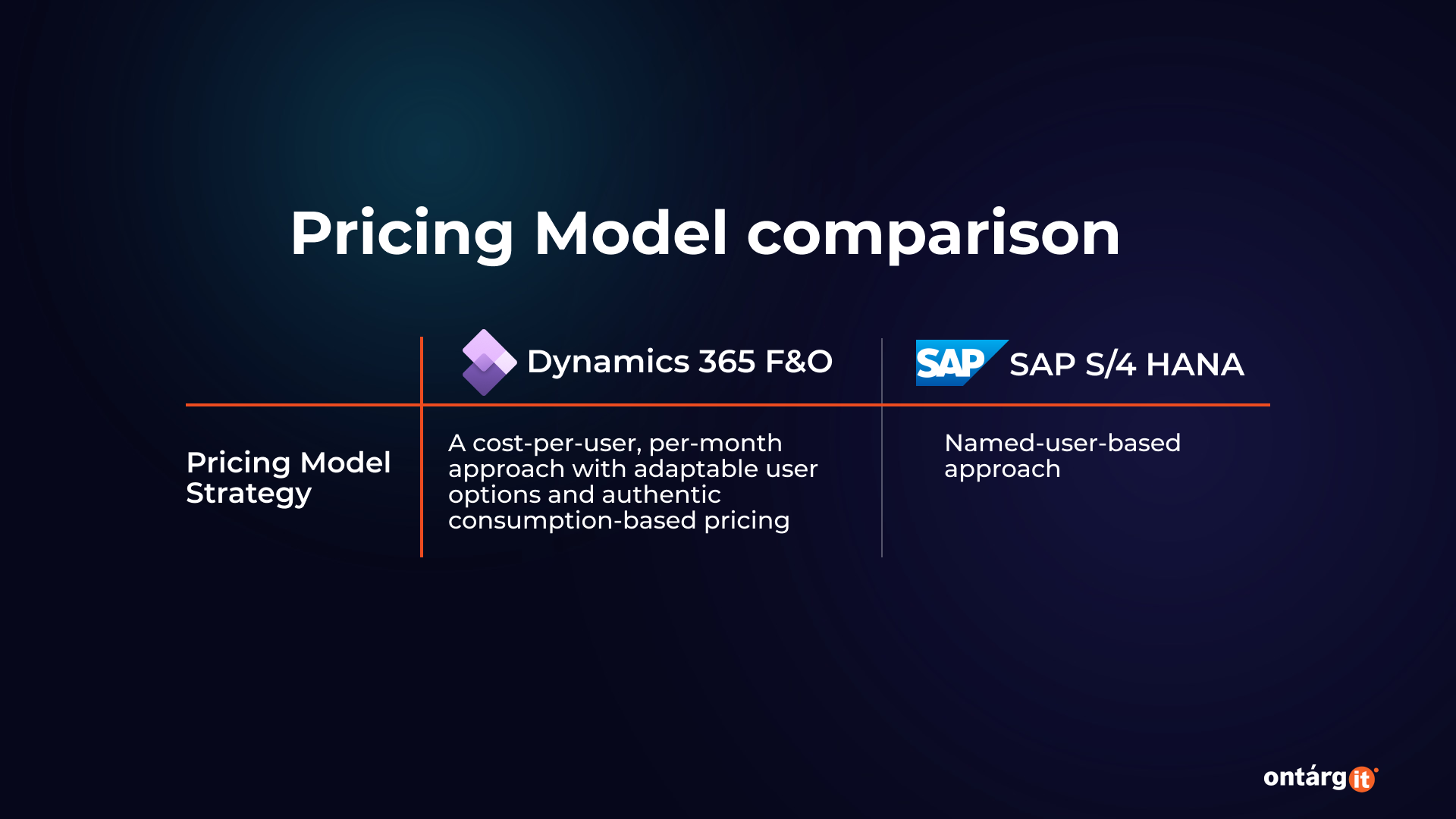
Microsoft Dynamics 365 F&O Price List
Microsoft Dynamics 365 F&O uses a pay-per-user per-month model, allowing businesses to adjust their ERP system based on their needs. This approach provides flexible and cost-effective pricing, making it suitable for companies of different sizes.
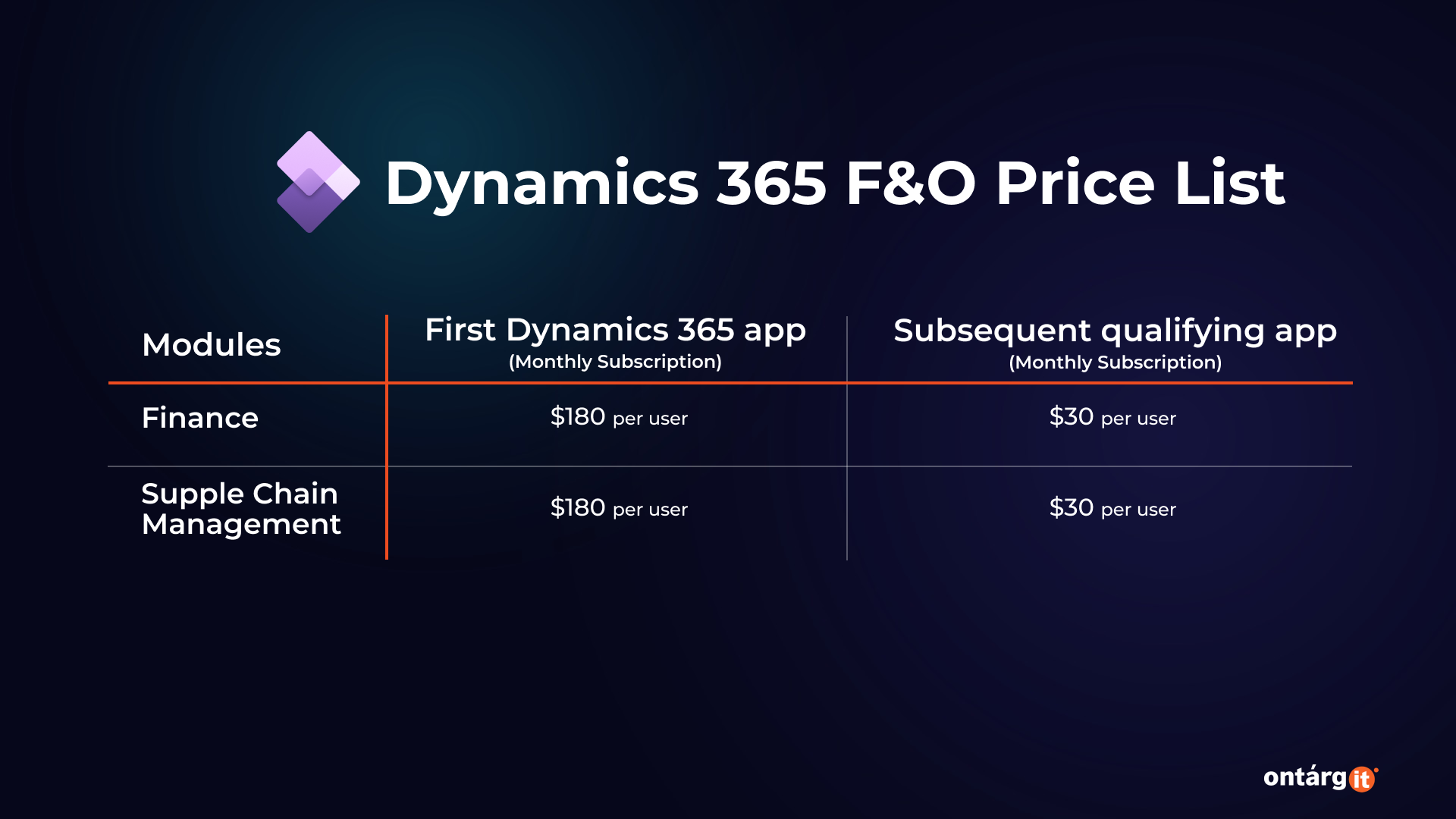
SAP S/4 HANA Price List
When considering SAP S/4HANA, it’s important to be aware that the initial purchase and implementation costs may not cover all the financial aspects. Additional expenses such as training, support, maintenance, and customization should be factored in for a complete financial evaluation. This ensures a better understanding of the total investment.

Dynamics 365 vs SAP HANA general comparison
Both Microsoft Dynamics 365 and SAP S/4HANA serve as comprehensive and feature-rich solutions strategically designed to optimize business processes, enhance operational efficiency, and foster organizational expansion. However, discernible disparities exist between the two platforms that can significantly influence the selection of the most suitable solution tailored to the specific needs of an organization. Main key contrasts between Microsoft Dynamics 365 and SAP S/4HANA, is in aspects such as user-friendliness, adaptability, features, and integration capabilities
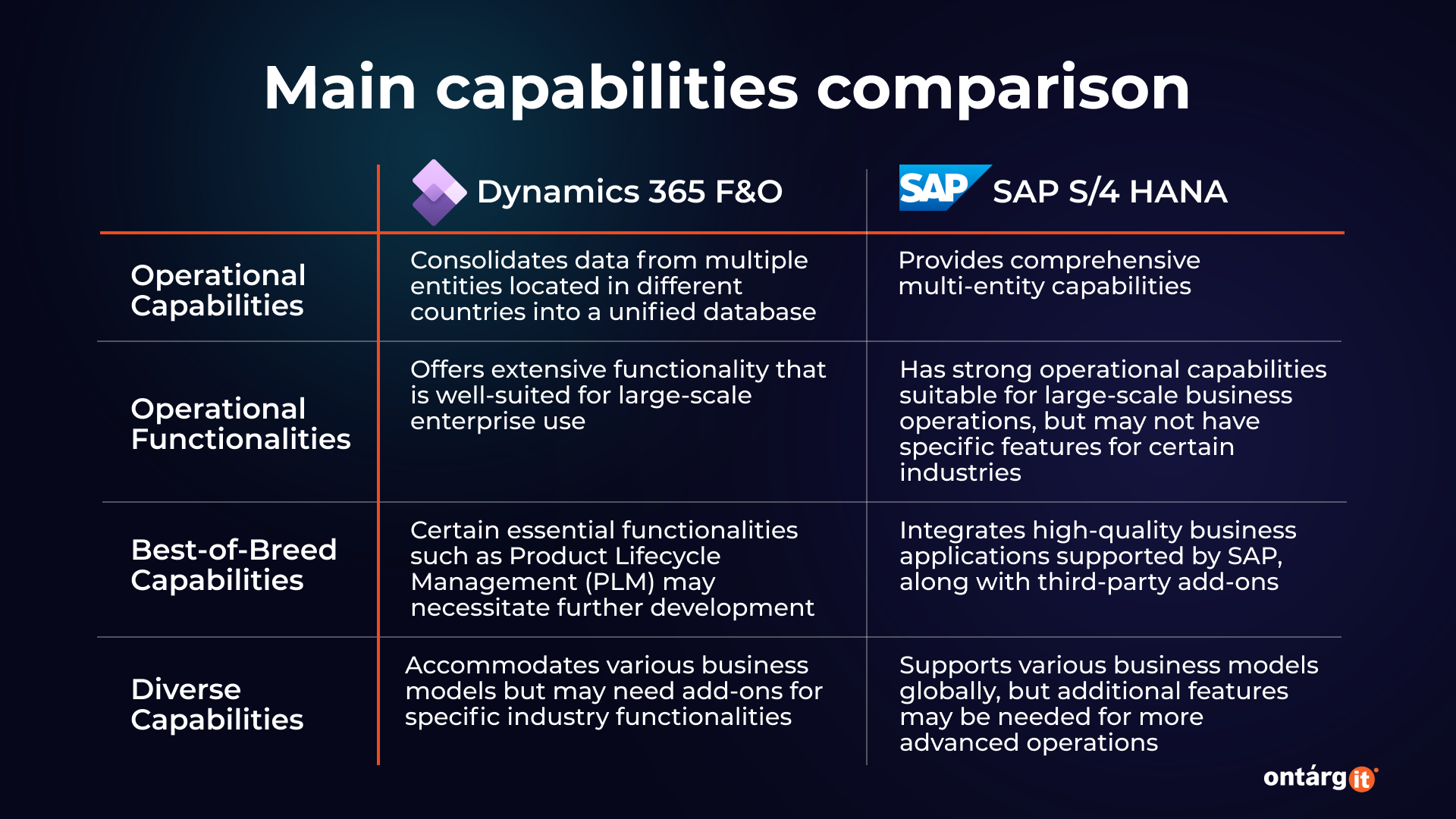
Operational Capabilities
Microsoft Dynamics 365 F&O and SAP S/4HANA both excel in providing global operational capabilities, but they do so in slightly different ways.
Comparing Dynamics 365 vs SAP, Microsoft Dynamics 365 F&O is designed to consolidate multiple entities across different countries into a single database, enabling seamless management of global operations. This capability is especially beneficial for multinational corporations that require a unified platform to manage their diverse operations effectively.
SAP S/4HANA also offers comprehensive multi-entity capabilities, making it a strong contender in the global operations arena.
However, businesses may need to evaluate their specific requirements in the Dynamics 365 vs SAP decision to determine which platform better aligns with their global strategy.
Operational Functionalities
Microsoft Dynamics 365 F&O provides rich operational functionality suitable for large enterprises, making it a strong choice for businesses with complex operational requirements.
The platform’s robust features cater to various industries, although it may not have all the industry-specific functionalities that some businesses might need. In the Dynamics 365 vs SAP comparison, SAP S/4HANA offers enterprise-grade operational capabilities but with certain limitations in industry-specific features.
SAP S/4HANA is a versatile solution for businesses that require strong operational functionalities across different sectors, but it may not be the best fit for industries that demand highly specialized features.
Best-of-Breed Capabilities
Microsoft Dynamics 365 F&O provides rich operational functionality suitable for large enterprises, making it a strong choice for businesses with complex operational requirements.
In the Dynamics 365 vs SAP comparison, while certain functionalities like Product Lifecycle Management (PLM) may require additional development, the flexibility of Dynamics 365 F&O ensures that businesses can customize their ERP system to meet specific needs without being locked into rigid structures.
SAP S/4HANA, though supported by enterprise-grade applications, often relies on third-party add-ons, which can complicate the system and increase reliance on external vendors.
Diverse Capabilities
Both Microsoft Dynamics 365 F&O and SAP S/4HANA are flexible when it comes to accommodating various business models. However, additional add-ons may be required for industry-specific functionalities. While Microsoft Dynamics 365 F&O supports a wide range of business models, certain industries may need supplementary add-ons to fully utilize the system’s capabilities. Similarly, SAP S/4HANA can handle diverse business models globally but may also require add-ons for deeper operational functions.
Dynamics 365 vs SAP HANA – Key Modules

Both Microsoft Dynamics 365 F&O and SAP S/4HANA offer a range of key modules designed to support different aspects of business operations. Microsoft Dynamics 365 F&O includes modules for Financial Management, Supply Chain Management, Manufacturing Management, Human Resources Management, Business Intelligence and Reporting, Security and Compliance, Development and Customization, and System Administration.
SAP S/4HANA offers modules for Financial Management, Sales, Procurement, Manufacturing Management, Supply Chain Management, Professional Services Automation, and Customer Relationship Management (CRM). When comparing Dynamics 365 vs SAP S/4HANA, both platforms cover essential business functions, so companies should consider which specific modules are most relevant to their operations when making a decision between Dynamics 365 vs SAP.
Financial Management
Financial management is the backbone of any successful organization, ensuring that resources are allocated effectively, financial processes are streamlined, and long-term goals are met. Both Microsoft Dynamics 365 Finance & Operations and SAP S/4 HANA offer robust financial management tools designed to meet the needs of businesses of all sizes. While both platforms provide comprehensive solutions to handle accounting, reporting, and cash flow management, understanding the distinct strengths of each system can help businesses choose the right fit for their financial operations.
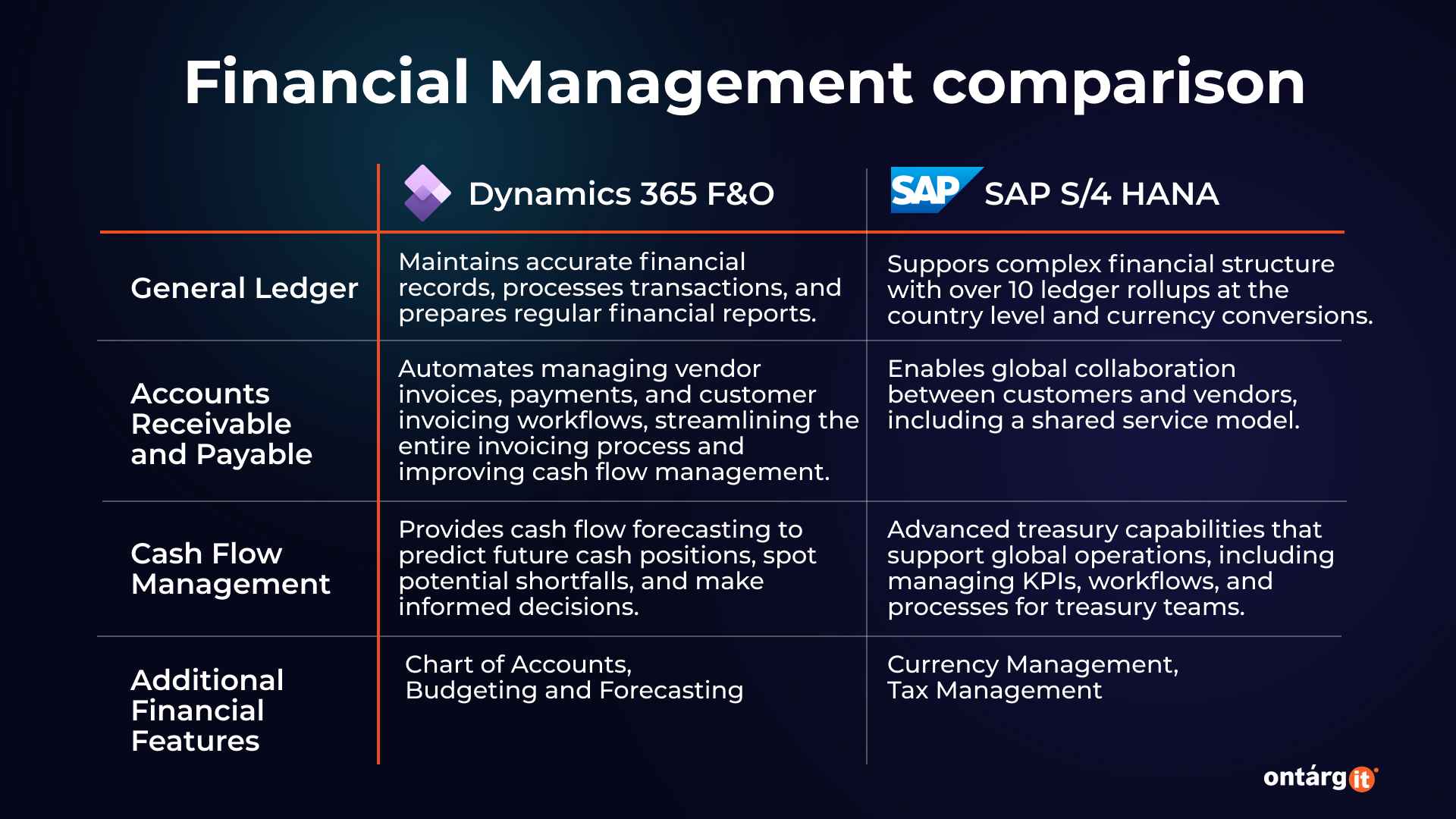
Supply Chain Management capabilities in Dynamics 365 vs SAP S/4HANA
Supply chain management is a critical component of any business that deals with the production, distribution, and sale of goods. These capabilities are designed to streamline and optimize every aspect of the supply chain, ensuring that businesses can manage their operations efficiently and respond quickly to market demands. When evaluating ERP solutions like Dynamics 365 vs SAP, Microsoft Dynamics 365 Finance & Operations (F&O) and SAP S/4HANA stand out as two leading options that offer robust supply chain management capabilities.
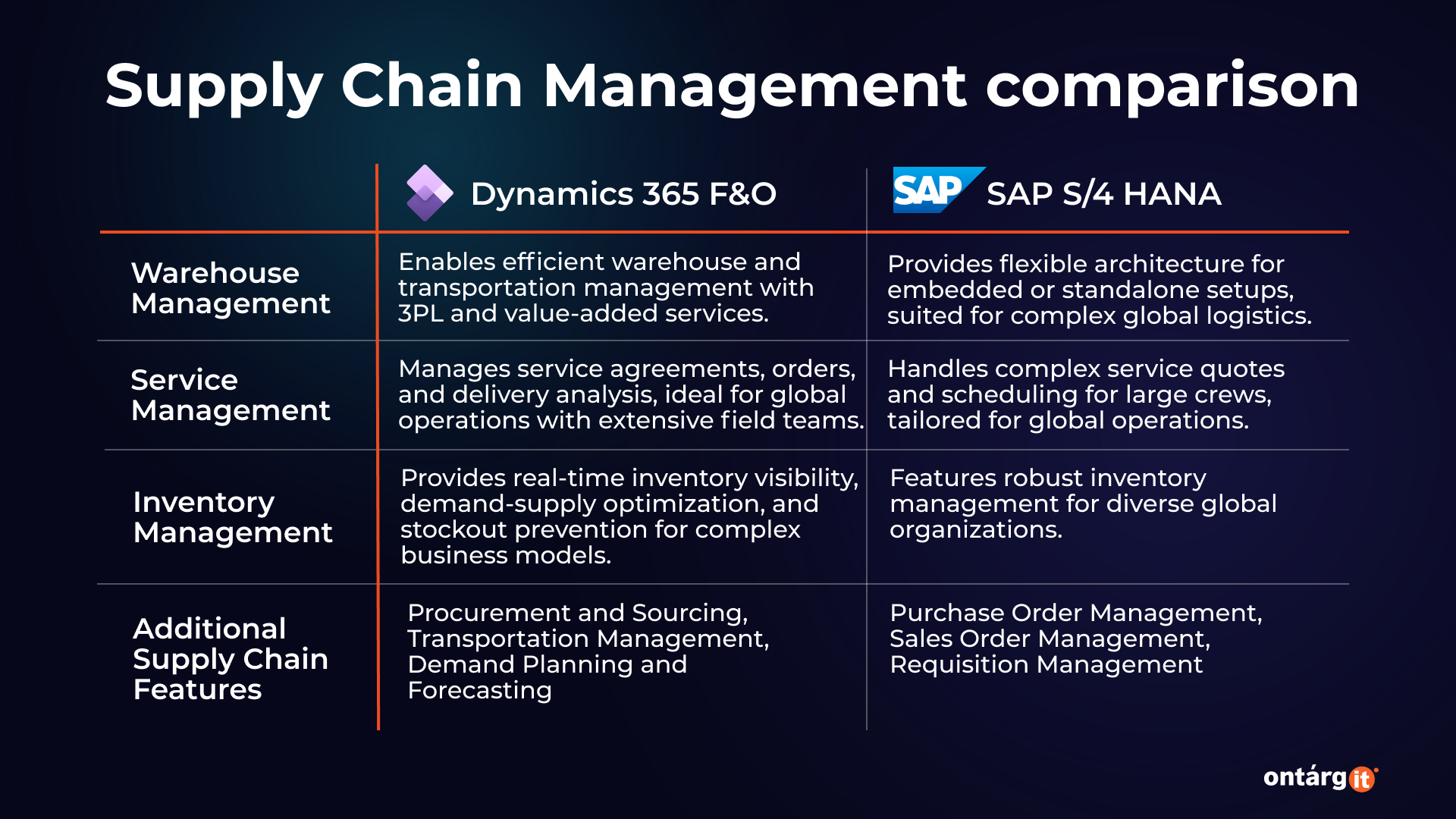
Dynamics 365 vs SAP S/4HANA Manufacturing Management
Manufacturing management is a critical component of any enterprise resource planning (ERP) system, as it directly influences the efficiency and effectiveness of production operations. Microsoft Dynamics 365 vs SAP S/4HANA comparison aims to identify which platform offers the best tools for optimizing manufacturing processes strengths, flexibility, and industry-specific functionalitie and driving business success.
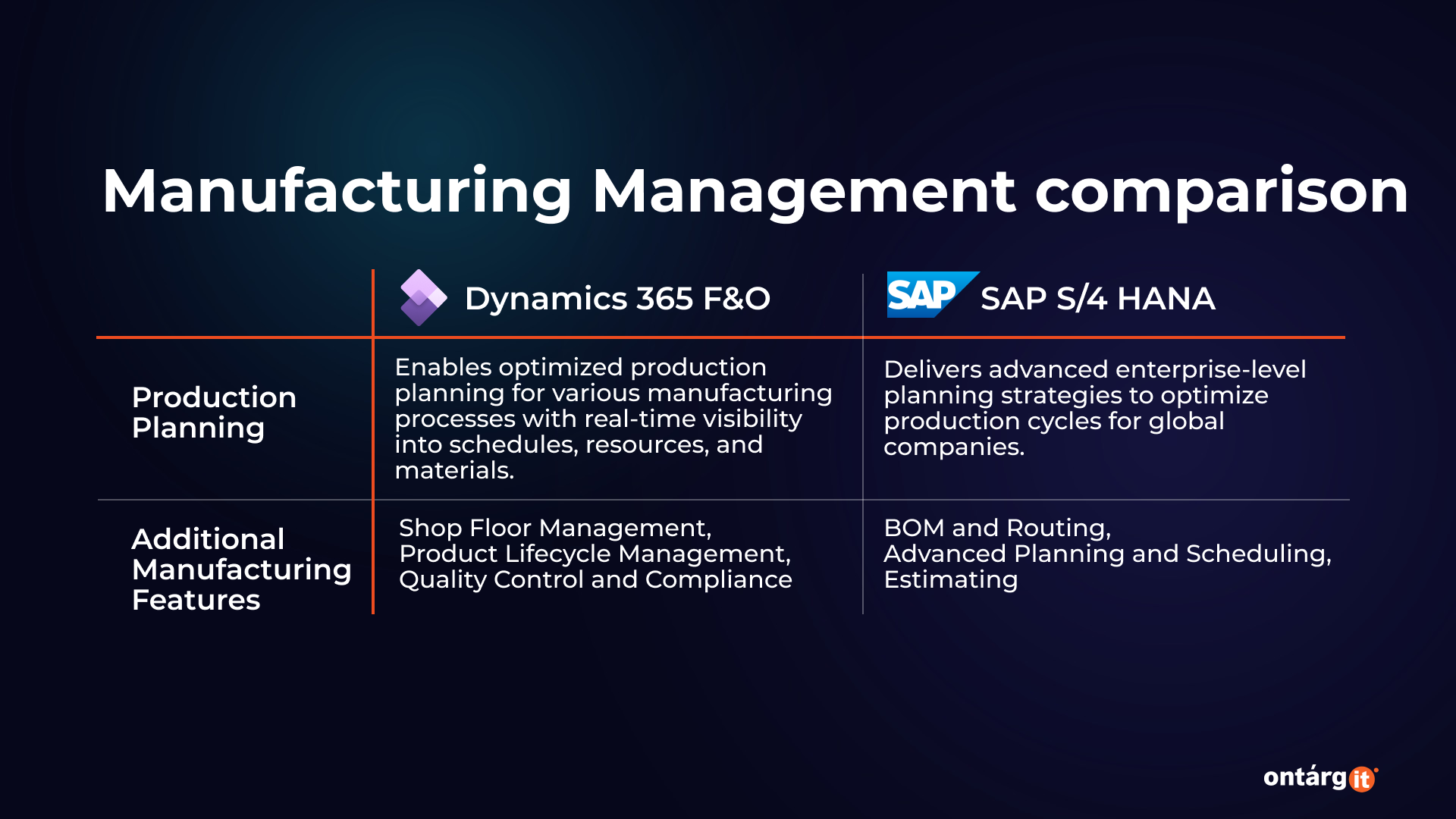
BI and Reporting difference Dynamics 365 vs SAP S/4HANA
Сomparing Dynamics 365 vs SAP S/4HANA, understanding their stack up in terms of BI and reporting, helping businesses identify the solution that best aligns with their strategic goals and operational needs. Both platforms offer robust features, but their approaches to data management, reporting, and analytics differ significantly.
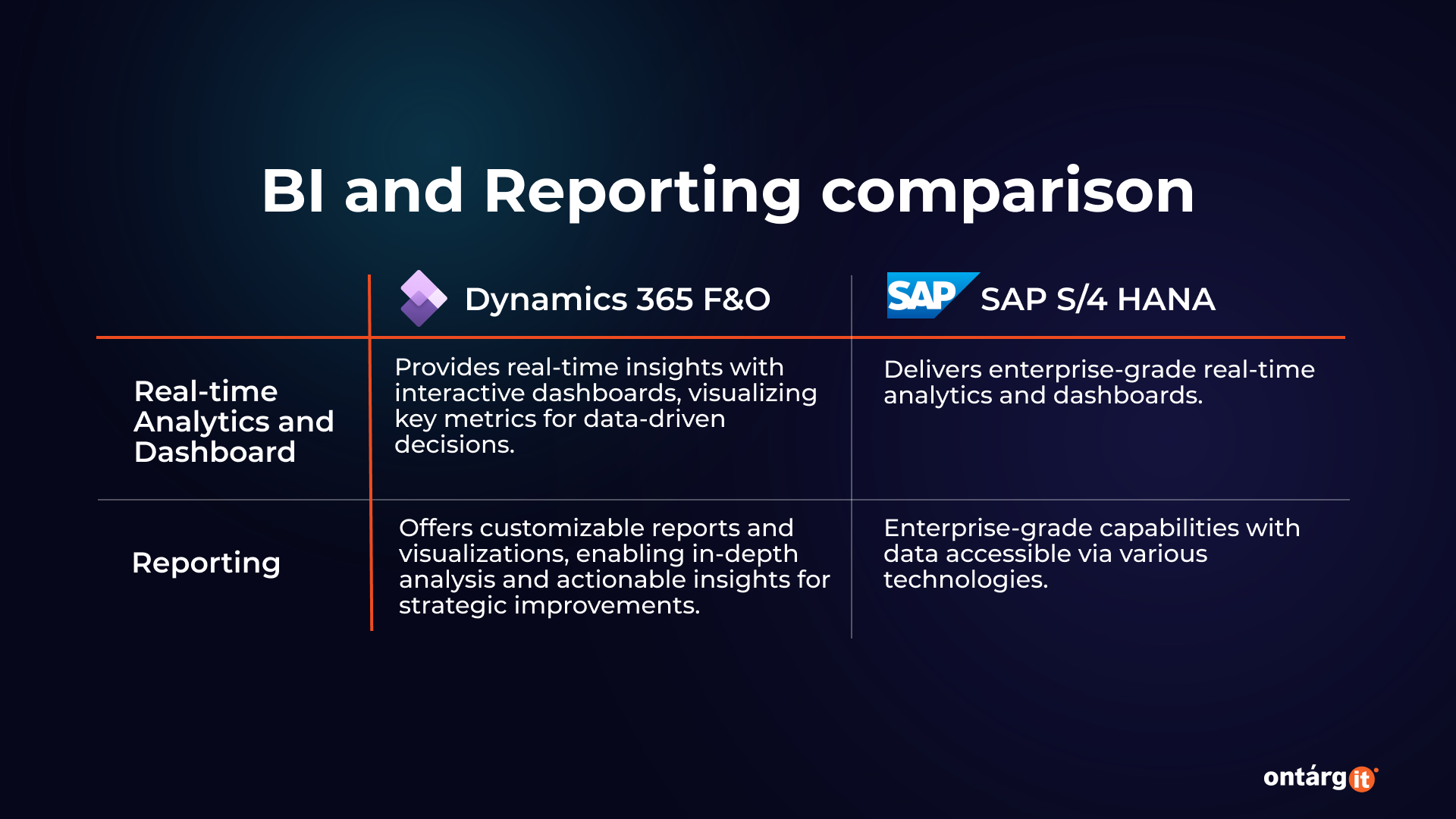
Microsoft Dynamics 365 and SAP S/4HANA both offer powerful ERP solutions tailored to meet the varied needs of modern businesses. However, when considering Dynamics 365 vs SAP, Microsoft Dynamics 365 F&O excels in areas requiring flexibility, user-friendly interfaces, and robust support for complex financial and supply chain processes.
These features make it an excellent choice for businesses seeking an ERP system that can adapt to their unique requirements and improve operational efficiency. SAP S/4HANA is a strong contender, particularly for large, global enterprises needing advanced planning, scheduling, and reporting capabilities. By carefully comparing the features and functionalities of each platform, businesses can select the ERP solution that best aligns with their operational objectives and strategic vision.
Pros of Microsoft Dynamics 365 vs SAP S/4 HANA
When choosing between Microsoft Dynamics 365 vs SAP S/4 HANA, it’s essential to understand the unique advantages each system offers.
Microsoft Dynamics 365 for Finance and Operations (F&O) has a significant advantage due to its large consulting base and active marketplace. This feature provides a unique benefit that many ERP systems cannot match, making it a top choice for businesses seeking strong support and a wide range of third-party solutions. Additionally, Dynamics 365 F&O is well-suited to serve as the financial ledger for global companies operating in multiple countries. Its support for global operations, along with pre-built integration for leading CRM and field service solutions, makes it an excellent option for complex multinational corporations.
When it comes to manufacturing capabilities in the Dynamics 365 vs SAP debate, Dynamics 365 F&O stands out with its item master product model and warehouse architecture, which can cater to the requirements of most manufacturing business models. Furthermore, the integrated Warehouse Management System (WMS) and Transportation Management System (TMS) processes offer end-to-end traceability, a crucial feature for companies that need detailed tracking even after goods have left the dock.
SAP S/4 HANA, on the other hand, stands out for its capability to efficiently process highly complex Material Requirements Planning (MRP) runs, thanks to the robust HANA database. This is especially beneficial for companies with extensive product models containing millions of serial numbers and SKUs, as SAP S/4 HANA can carry out these tasks much more rapidly than the majority of ERP systems.
SAP S/4 HANA has been rearchitected for the cloud but is still considered a legacy product. It is better than many other legacy products in terms of cloud capabilities, but it may not provide a superior user experience. However, it is well-suited for complex operations due to its transactional maps and products that help in debugging intricate financial enterprises.

Cons of Microsoft Dynamics 365 vs SAP S/4 HANA
It is important to acknowledge both the strengths and limitations of ERP systems, including Microsoft Dynamics 365 vs SAP S/4 HANA.
Microsoft Dynamics 365 F&O may be overwhelming for smaller companies due to its configuration and approval flows, which are designed with large enterprises in mind. The integrated controls within the product, while beneficial for larger organizations, might seem unnecessary and cumbersome for smaller businesses. In the Dynamics 365 vs SAP comparison, these issues are particularly relevant for companies that require more streamlined processes. Additionally, performance issues could arise for large, complex organizations that process millions of journal entries per hour, as Dynamics 365 F&O may not meet the high expectations set by these companies.
Another significant challenge involves navigating the Microsoft Dynamics 365 ecosystem. The presence of unqualified Independent Software Vendors (ISVs) and Value-Added Resellers (VARs) can complicate the selection and implementation process, potentially leading to suboptimal outcomes. Furthermore, despite its advanced financial traceability and technical capabilities, the functional depth of Dynamics 365 F&O is not as extensive as its on-premise predecessor. This limitation could deter companies requiring extensive customization and detailed financial operations.
SAP S/4 HANA also has its own set of challenges. For example, smaller organizations may find the system’s excessively complex financial control processes, like compliance allocation and approval flows, to be unnecessary. The data model, which is tailored to meet the needs of large enterprises, can be overwhelming for smaller businesses, especially those transitioning from simpler systems like QuickBooks.
Furthermore, SAP S/4 HANA’s integration capabilities may not always be readily available. In industries such as Aerospace and Defense (A&D), where specific Product Lifecycle Management (PLM), configurators, and Configure Price Quote (CPQ) systems are utilized, the absence of pre-integrated solutions can result in extended implementation time and increased costs. When comparing Dynamics 365 vs SAP in sectors where SAP S/4 HANA is not commonly utilized, other ERP solutions may provide more specialized and comprehensive last-mile capabilities, making SAP S/4 HANA a less appealing choice.
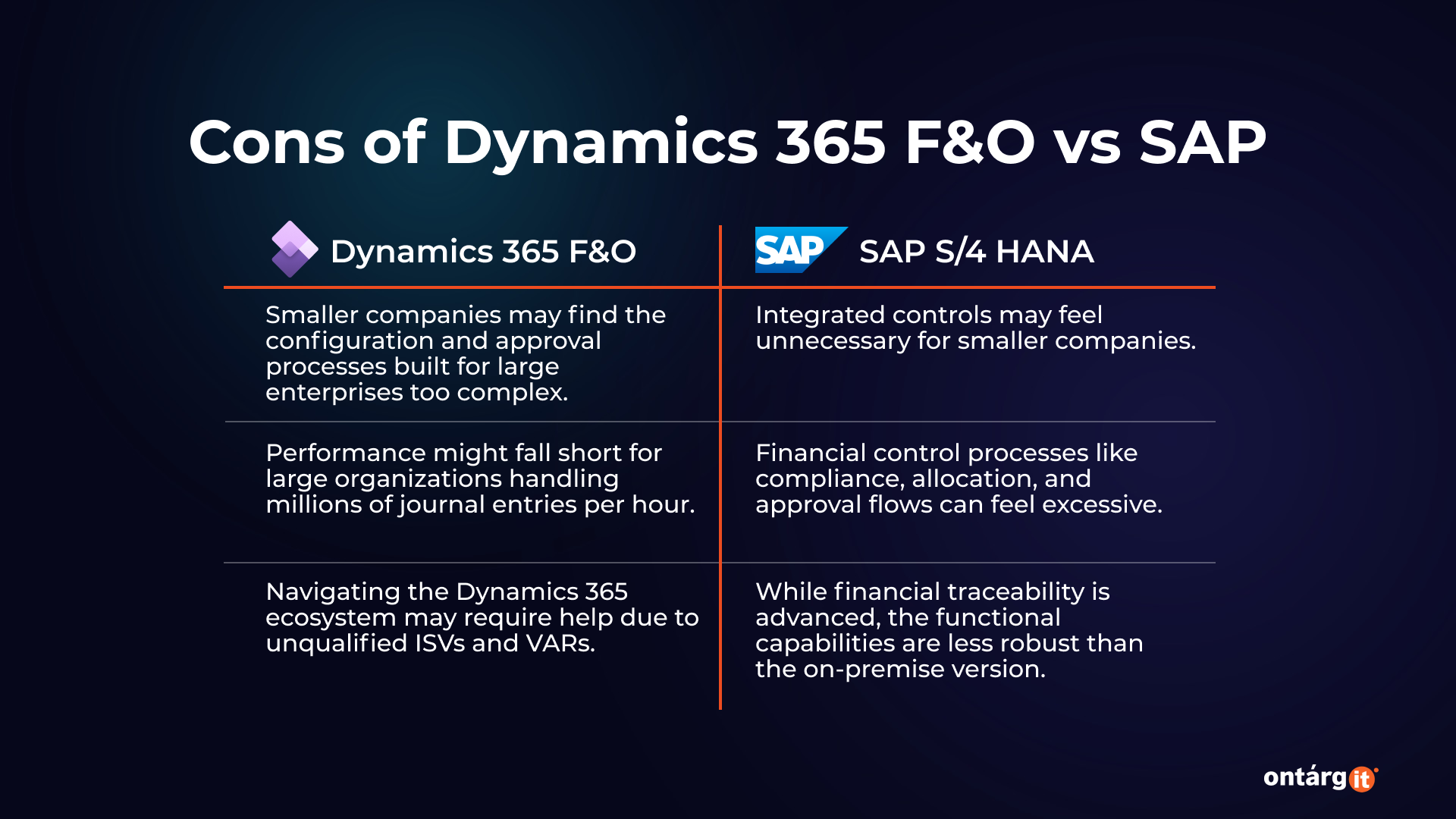
Conclusion
When deciding between Microsoft Dynamics 365 and SAP S/4 HANA, businesses must weigh the strengths and limitations of each system based on their unique operational needs. Microsoft Dynamics 365 for Finance and Operations (F&O) shines with its vast consulting base, active marketplace, and global financial ledger capabilities, making it ideal for multinational corporations seeking robust support and flexibility. Its manufacturing capabilities, integrated Warehouse and Transportation Management Systems, and seamless CRM integration further enhance its appeal for companies with complex operational requirements. However, its configuration complexity and performance limitations may overwhelm smaller companies, and navigating its ecosystem of third-party vendors can sometimes complicate implementation.
On the other hand, SAP S/4 HANA’s strength lies in its powerful architecture, particularly its ability to handle complex Material Requirements Planning (MRP) runs through its HANA database, making it a standout option for large enterprises with extensive product models and high data processing demands. While it offers solid cloud capabilities and intricate financial controls, its complexity may prove cumbersome for smaller businesses, especially those lacking the resources to manage SAP’s advanced integration and customization needs. Additionally, SAP’s limited pre-integrated solutions in specific industries could lead to increased implementation costs and time.
Ultimately, choosing between Microsoft Dynamics 365 vs SAP S/4 HANA comes down to a company’s size, industry, and operational complexity. Microsoft Dynamics 365 is well-suited for global scalability and flexibility, while SAP S/4 HANA excels in handling the most demanding operational processes for large enterprises. Independent ERP consultants can be invaluable in navigating this decision, offering tailored guidance to ensure the selected system aligns with the organization’s long-term goals and operational priorities.
